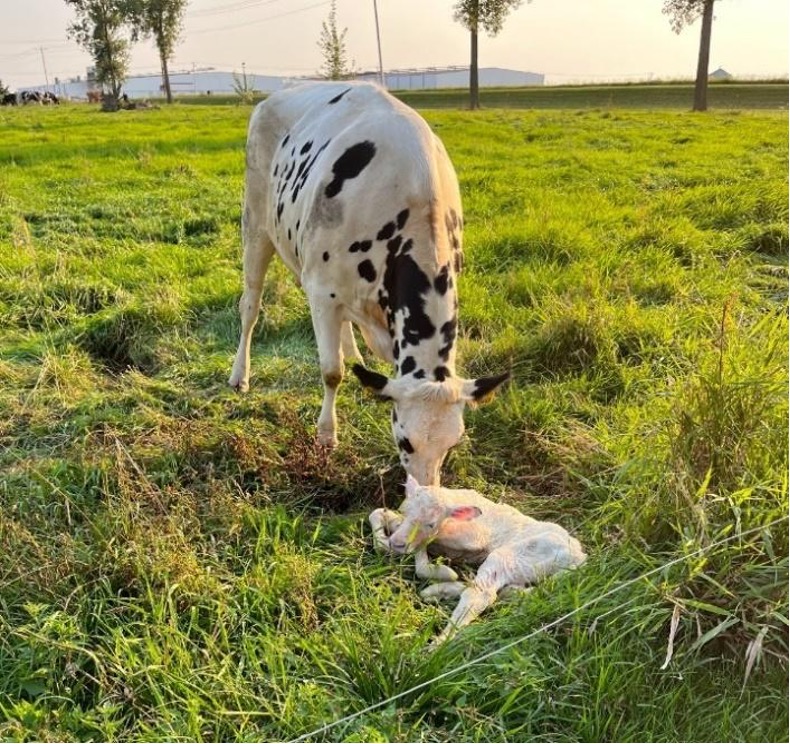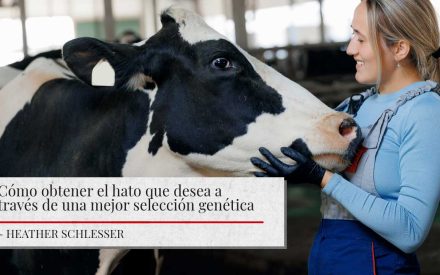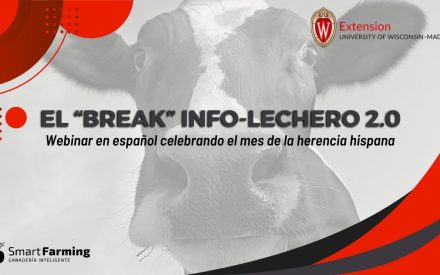
The Council for Dairy Cattle Breeding (CDCB; https://uscdcb.com/merit-selection/) releases updated dairy sire summaries in April, August, and December. The science of sire summaries has changed in recent years. More traits, especially for health, longevity, and efficiency can now be evaluated and included for selection. In addition, the inclusion of genomic data has made it possible to identify superior sires more rapidly. With all the information available today, dairy producers may be wondering where to begin the selection process.
Sire proofs can contain a lot of abbreviations, acronyms, and terminology. A sire proof can be broken down into a few main parts:
- Animal and pedigree information: Registered name, National Association of Animal Breeders (NAAB) code, breeder, sire, dam, and maternal grandsire.
- Production traits: milk, fat, protein, etc.
- Type: overall final classification score, udder, feet and leg, and body composite; linear profile: detailed breakdown of body, udder, and feet and leg traits.
- Fitness and additional traits: calving ease, daughter pregnancy rate, productive life, sire conception rate, mastitis, metritis, DA, and more.
Selection Indexes
A good starting point in identifying sires to use in your herd is using a selection index. Indexes look at a combination of production, type, and fitness traits. The index then places a weight on each trait to generate a final number that can be used to rank sires.
CDCB Merit Rankings
CDCB merit rankings place an emphasis on traits using research-based data on each trait’s economic importance to the dairy farm, as well as the heritability of the trait. A combination of genetics and the environment influences animal performance, or phenotype. Heritability references the percentage of observed differences in a trait that are due to genetics. More highly heritable traits are influenced more by genetic decisions.
- Net Merit Dollars (NM$) Designed to reflect the economics of the US dairy industry, NM$ places a weight of 52% on production and efficiency, 35% on health and fertility, and 13% on type traits.
- Cheese Merit Dollars (CM$) Has a heavier weighting on milk components and a slightly negative weighting on milk, best reflecting the economics in markets pricing milk used for cheese production.
- Fluid Merit Dollars (FM$) Reflects pricing in Federal Orders in the Southeast US, where compensation is weighted more heavily for fluid milk production and less on specific milk components.
- Grazing Merits Dollars (GM$) Reflects increased need for good mobility and cow fertility in grazing herds.
Not every cow is likely needed to be a contributor to the future herd. If not, how do you decide which cows to use? The selection of the best dams is also important. The use of sexed semen and other reproductive technologies is another chapter in developing a highly profitable herd.
Breed & Custom Indexes
Breed-specific indexes are set by the breed associations to encourage selection on the highest priority traits as determined by the breed association. Examples: GTPI, JPI, JUI, PPR, etc. Other user-driven indexes are available online, allowing producers to customize their selection.
Genomic Testing and Artificial Insemination Companies’ Proprietary Indexes
There are many indexes similar in concept to the CDCB Net Merit Dollars index that have been developed. They often have access to additional information like Dairy Comp 305 data from very large herds, not available from conventional DHI and breed classification programs. For example, there is now greater insight into mastitis resistance based on herd mastitis recording that is in addition to the Somatic Cell Score (SCS) ratings based on DHI information.
Bulls from other countries are routinely marketed in the US with genetic information from their country. This may result in two indexes – one from their country and the US index, which may have limited information. Multiple-trait Across Country Evaluations (MACE), provided by Interbull, denotes that a bull’s proof evaluation includes daughter information from multiple countries. Interbull is a consortium of geneticists from multiple countries that establishes the conversions of diverse data from many countries. These bulls are often selected based on quite different criteria and may or may not compare well once they eventually have domestic information.
Refining Selection
After using an index to make an initial sort, some producers may want to refine their sire search by further screening for individual traits of importance. For example, a robotic milking herd may initially sort out the top 20% of sires for Cheese Merit Dollars within their herd, in addition to specific selection for teat placement and size.
Inbreeding
Inbreeding continues to be a concern in dairy cattle breeding. Keeping accurate pedigree records on cows in your herd and using them in mating decisions is an important tool in managing the percent inbreeding in your herd. Many AI, animal wellness, and breed organizations offer computerized mating programs that will take pedigree information into account and manage inbreeding for you.
Genetic Codes and Recessive Traits
Proofs can also contain genetic codes for undesirable recessive traits, horned vs. polled, hair coat color, and milk protein profiles. For example, if you wanted to guarantee a polled calf, you would search for sires with two copies of the polled gene (homozygous), which is coded PP in sire proofs. In another example, Complex Vertebral Malformation (CVM) is a lethal trait identified in the late 1990s. To reduce the incidence of this condition, AI sires were heavily tested and dairy producers could elect to use sires designated TV, meaning they had been tested free of the CVM gene. Most breed organizations and AI companies have useful guides and appendices to help producers if they are unsure of what a genetic code or abbreviation is.
Conclusion
There are very good selection indexes to reduce possible information overload when reading sire proofs. Find an index that is closest to your needs and supplement it with specific traits you want to emphasize. Some producers may choose to pass these decisions off to their AI company, breed organization, or genomic testing provider. If you choose to relinquish selection decisions to a service provider, communicate to make sure that your goals are understood. The resulting offspring will be disappointing once they hit the milking string if the selections made don’t align with your goals. It is best to understand the terminology so that you have confidence the right matings are being made. Using the right semen is an important investment in the future of your herd.


 Proper semen handling for improved fertility in bovines and other livestock
Proper semen handling for improved fertility in bovines and other livestock ▶️ Watch: Higher Fertility Success for Wisconsin Dairy Farmers: Panel Discussion
▶️ Watch: Higher Fertility Success for Wisconsin Dairy Farmers: Panel Discussion Cómo obtener el hato que desea a través de una mejor selección genética
Cómo obtener el hato que desea a través de una mejor selección genética Selección genética para una lechería más sostenible
Selección genética para una lechería más sostenible


